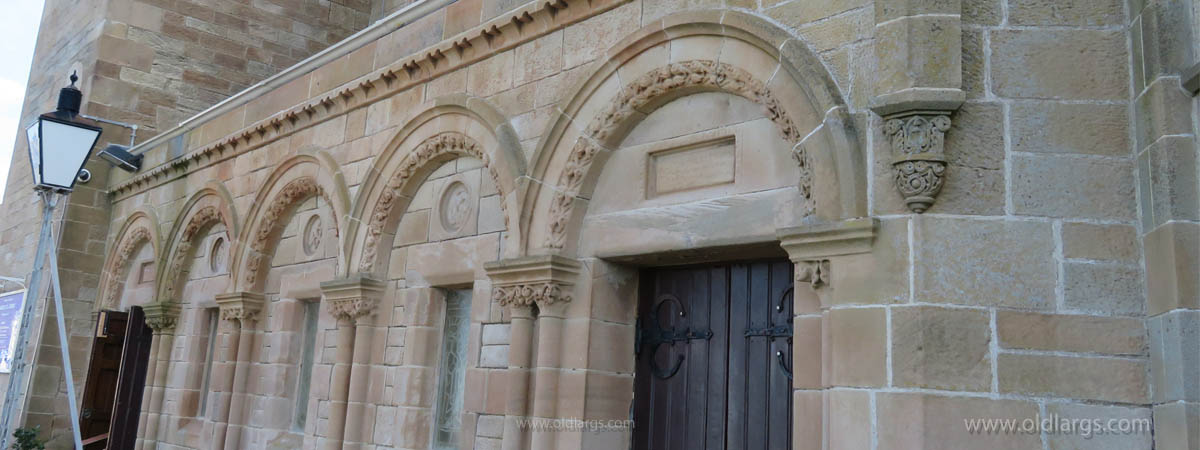
Sandringham flats
Next on the left we have the Sandringham flats. On this site used to be the Columba Hall and McQuiston's boat yard.
Columba Halls was originally called the Relief Church and was built in 1761. In 1847 the hall became vacant when the Relief church joined with another body to form the United Presbyterian Church. That congregation then became part of the Clark Memorial Church. The hall was then handed over to the Scottish Episcopal Church.
They occupied the hall until 1877 when their new church at Aubery Crescent was built. The hall then became a public hall. In the 1930 it was a popular skating ring. The three first block of Sandringham flats were built in 1905. The final 2 blocks were completed in 1908. They were built by William Strachan of Greenock.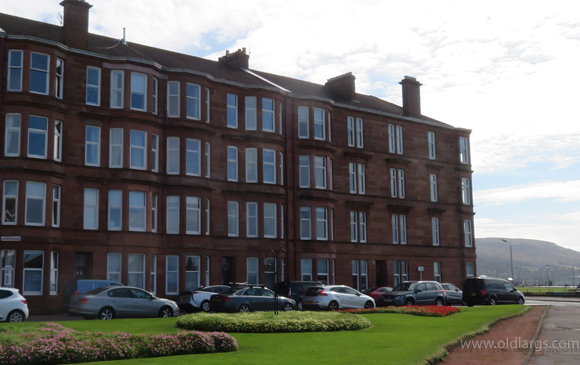
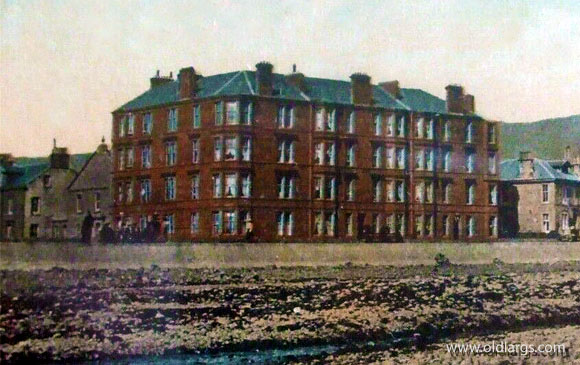
Sandringham flats
Sandringham flats block 1, 2 & 3 complete. The final two blocks have still to be built.
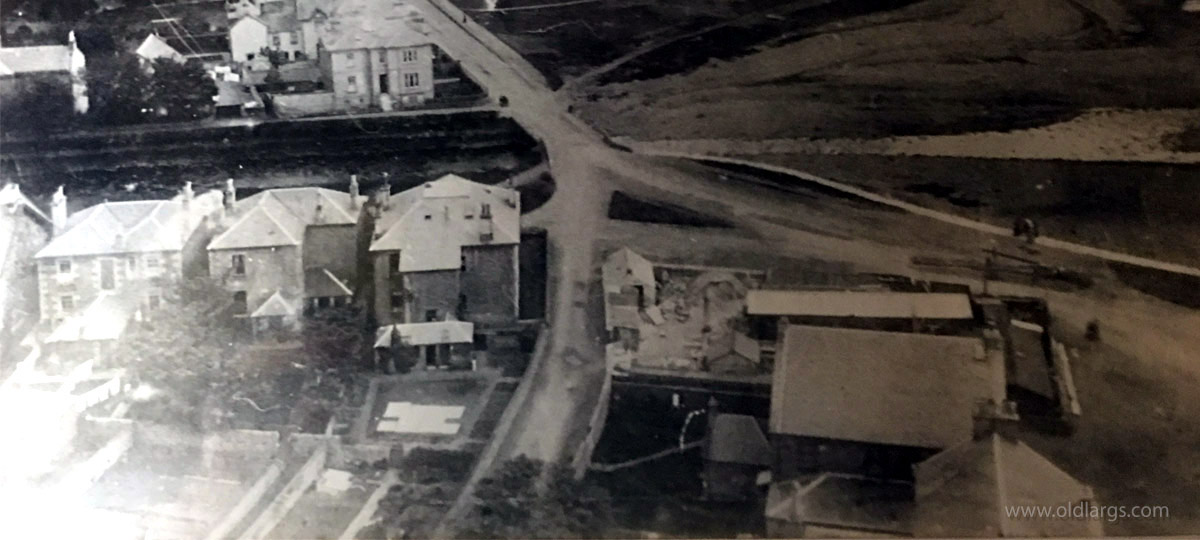
A photo of Columba Halls and McQuiston's boat yard prior to the construction of Sandringham flats.
Union Street and The Dunn Memorial Hall.
On the left we pass the entrance to Union Street where the Dunn Memorial Hall is located.
This building was opened in March 1936 in the memory of Mr David Guthrie Dunn of Knock Castle.
Mr David Guthrie Dunn was a very accomplished sailor who named all his yachts ‘Southern Cross' due to his fascination with the southern seas. He was the younger son of John Dunn who was a tobacco merchant and partner in the prominent Glasgow tobacco manufacturing company F & J Smith. He stayed in the family home at Knock Castle which was built by the boat-building Steele
family in 1851. John Dunn was left a large inheritance by his father and with it he was able to indulge in his great passion for yachting.
In 1930 at the age of 23 he ordered the construction of a specially designed 51 foot ocean going yacht called the Southern Cross. It was built by Alexander Robertson & Sons Ltd of Sandbank located on the Holy Loch which is near Dunoon.
On October 1930 David Dunn and the Southern Cross set out on a round the world cruise. With him were his friends James Shackleton from Yorkshire and Mr Mr Guthrie Penman from Dumfries. After crossing the Atlantic they spent some time in the Caribbean before passing through the Panama Canal on their way to the Pacific. After stopping at several islands on their way they arrived in Brisbane exactly one year after they set sail from the Clyde. David Dunn returned to Largs by steamer to attend to the estate of his father, during which time the Southern Cross was dry-docked and overhauled for the journey home. He returned to Brisbane in June 1932 to resume the return voyage with his two friends. By February 1933 they had reached the Southern Atlantic and were heading to St Helena. While on watch on the night of 8 March, during heavy seas, Guthrie Dunn fell overboard and was lost at sea.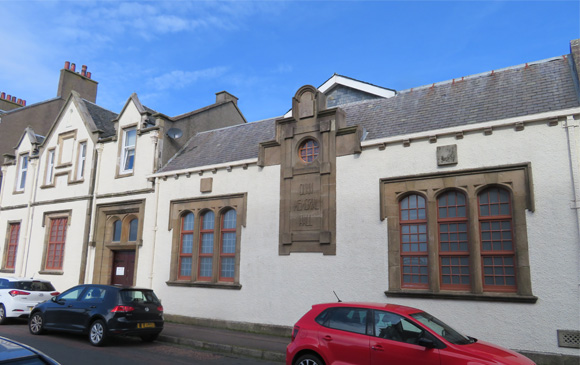

The Dunn Memorial Hall
The three man crew of Southern Cross in the centre, Brisbane June 1932
James Shackleton (navigator) on left, D Guthrie Dunn (owner/skipper) in the middle, W G Penman (engineer) to the right.
This photo is part of the Campbell family collection held in the John Oxely Library by the State Library of Queensland.
The yacht arrived in St Helena, with the remaining crew of two on 16 March, where an enquiry was held. A memorial service took place at St John's Church Largs on 25 March, which was attended by close family, all sections of the local community, and many prominent Clyde yachting personalities. It is sad to note that Guthrie Dunn's elder brother John was also lost at sea, while rowing off Knock Castle in 1923 , when he was just 18 years old.
Guthrie Dunn left a large estate of £1.2 million and in February 1935 it was announced to the congregation of St John's Church that a gift of £2030 was to be made for the erection of hall in memory of D Guthrie Dunn. The Dunn Memorial Hall was presented to the church and opened on 25 March 1936 by Mr Thomas Stark Brown, legal representative of the estate of the late Mr D Guthrie Dunn.In April 1933 Captain William Ure from Largs set off on a steamship from London, with a replacement crew, to bring the yacht back from St Helena. A rather weather beaten Southern Cross finally arrived back at Robertson's boat yard on the Holy Loch on 8 July 1933, nearly three years after she was launched there. The Southern Cross changed hands several times before she was bought by the Hull Fishing Vessel Owner's Association in the 1960's and used as a sail/navigation training vessel by them, and the local Nautical College. The yacht now under the name Cailach was sold and moved to the south coast of England. Around 1992 she left UK waters, and after an extensive renovation is now based in Mallorca.
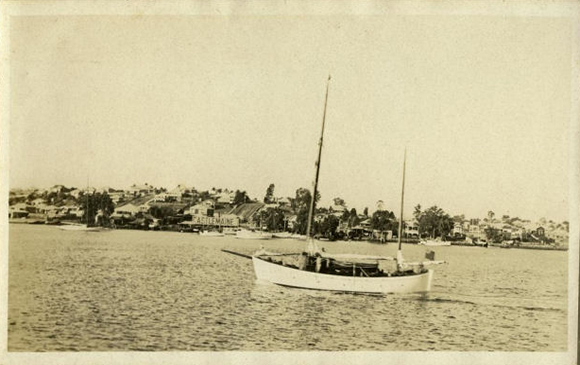
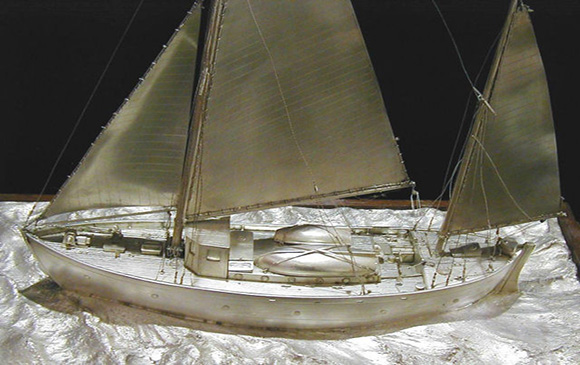
The Southern Cross departing Brisbane 1932. Photo courtesy of the John Oxley Library, State Library of Queensland
The Southern Cross trophy. Photo courtesy of the John Oxley Library, State Library of Queensland
The renowned Glasgow jeweller Robert Stewart, silversmith to Queen Victoria, was commissioned by D Guthrie
Dunn in 1930 to produce a finely crafted sterling silver model of Southern Cross. It is believed that Dunn
took delivery of the magnificent model in 1932, during his brief trip home. The mast is 60cm high and the
detail so fine you can see all the fittings and beautifully coiled ropes on the deck. In 1965 Dunn’s cousin
Miss Elizabeth B Mathieson donated the magnificent Southern Cross trophy to the Ayr Yacht Club to be
presented to the winner of the ‘Ailsa Craig’ offshore race.
War Memorial and St Johns Court.
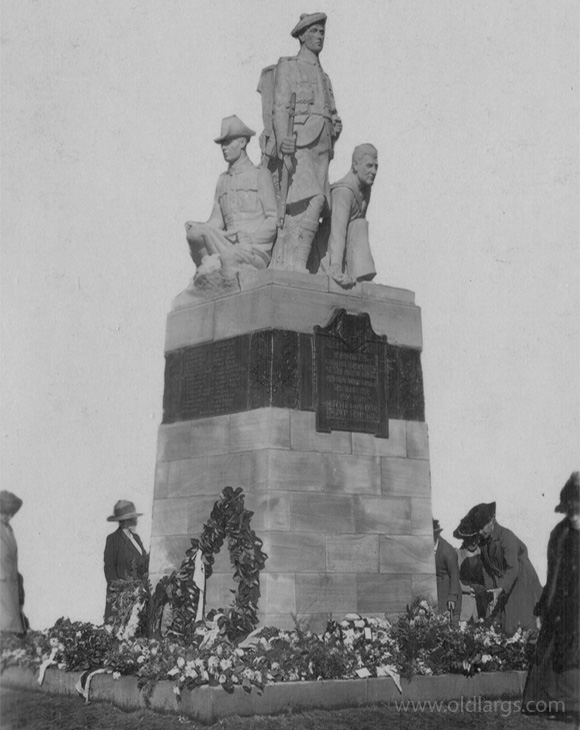
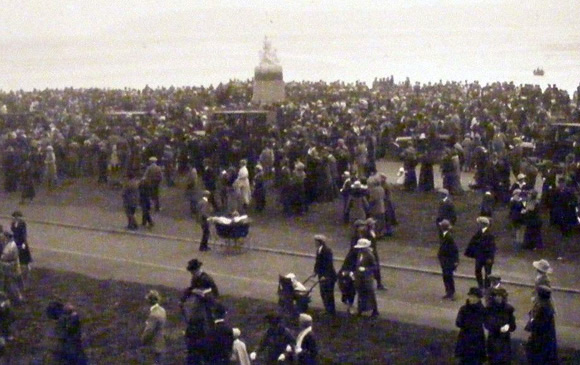
Top image shows the War memorial dedicated ceremony in September 1921. Image below St Johns Court.
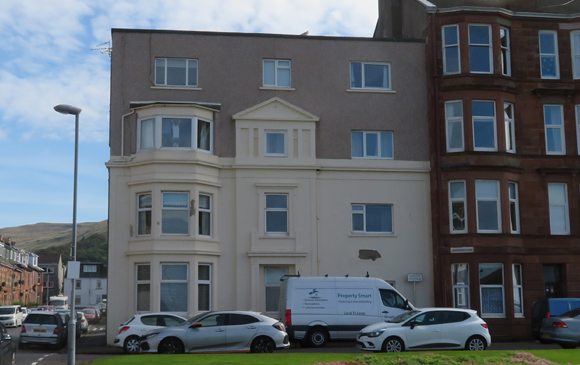
As we head up towards the GoGo Burn and bridge we pass the Largs War Memorial on the right. This was erected 1919 at a cost of £2300.
and dedicated in September 1921. It depicts figures on a pedestal representing the three services. The sculptor was
Kellock Brown of Glasgow Below that are the names of 87 local men killed in WW1. Further tablets were added after WW2.
A full list of names on the memorial can be found on the War Memorials Online Web Site.
Back on the left we have St Johns Court. This building was originally called Seaview and was built for a Captain MacPherson around 1840. By 1888 it was owned by a Christian association and used as a holiday home for overworked shop girls and others requiring rest. It was converted to flats in 1966 when two extra floors were added.
